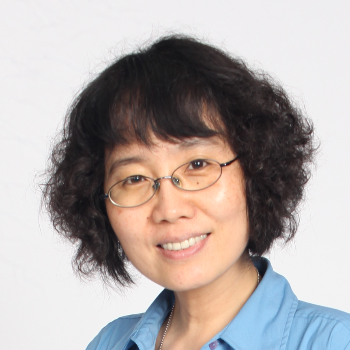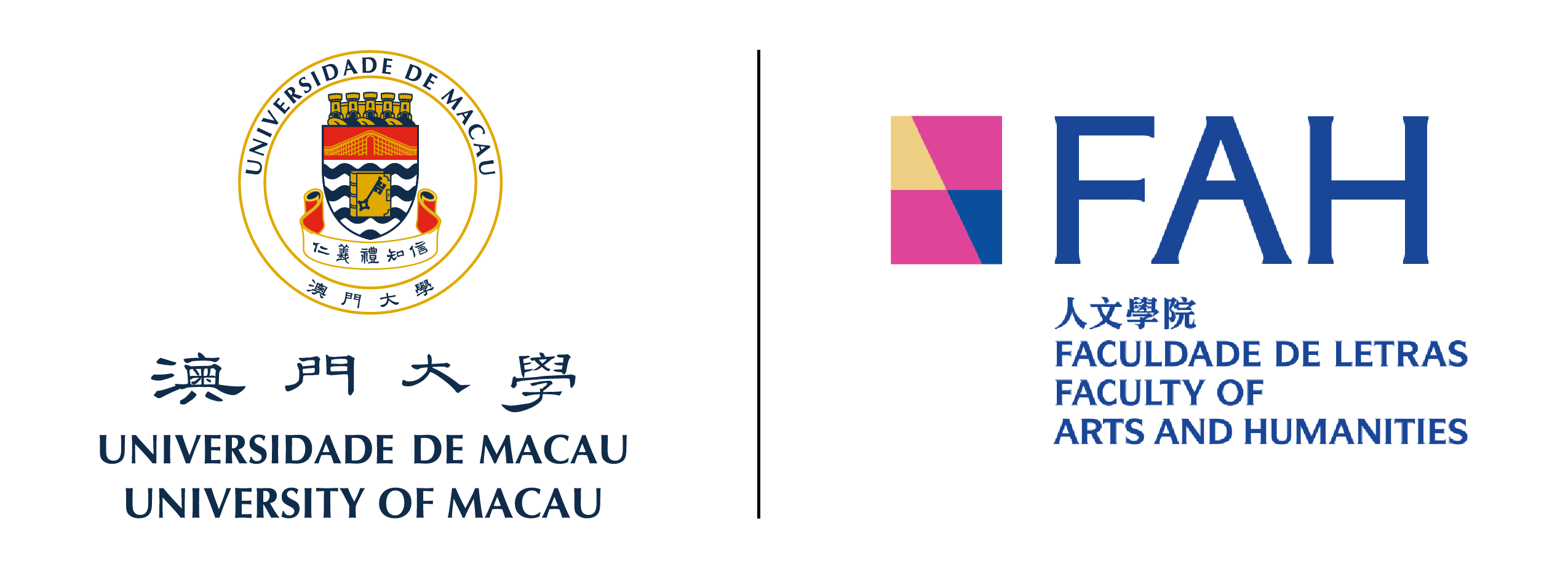
tszhu@um.edu.mo
Tel
(853) 8822 8813
Office
E21-2027
Consultation Hours
Wednesdays
14:30–16:30
ZHU, Tianshu 朱天舒
Undergraduate Programme Coordinator
Education
- Ph.D. In Art History, The Ohio State University, USA
- M.A. In Art History, The Ohio State University, USA
- M.A. In Archaeology, Northwest University, China
- B.A. In History, Northwest University, China
Research Interests
- Buddhist Art in India, Central Asia and China
- Chinese Popular Religion
- Buddhist meditation and ritual practice
- Chinese Art History
Current Research
- The protective deities in Buddhist art and Buddhist practice
- Macau temples and religious practice
- Popular religion in Leizhou, Guangdong
Courses Regularly Taught
Art History Courses:
- Buddhist Art History
- Asian Art History
- Art History of Ancient China
- Art History of Chinese Painting
- Modern Chinese Art History
- International Association of Buddhist Studies
- Association of Asian Studies
- Association of Central Asia and Silk Road Studies
- Society for the Study of Chinese Religions
- SEECHAC (Société Européenne pour l’Etude des Civilisations de l’Himalaya et de l’Asie Centrale)
Books:
- Coedited with Patricia Karetzky, Religious Art of Medieval China, special issue of Religions (ISSN 2077-1444), 2023
- Emanated Buddhas in the Aureole of Buddhist Images from India, Central Asia and China. Amherst: Cambria Press, 2019.
- Liaodai jinyinqi 辽代金银器 (The Gold & Silver Wares of the Liao Dynasty). Beijing: Wenwu chubanshe, 1998.
Articles:
- “Weituo shen zai Zhongguo de chongsu yu zhuanhua 韦驮神在中国的重塑与转化,” Foxue yanjiu 佛学研究1 (2024): 191-210.
- “The Indian Elements of the Qingzhou Style of Buddha Images in China.” In Transcending Boundaries: Premodern Cultural Transactions across Asia: Essays in Honour of Professor Osmund Bopearachchi. Ed. Susmita Basu Majumdar (Delhi: Primus books), 369-383.
- “Qingzhou Beiqi foxiang li de Yindu yuansu jiexi青州北齊佛像裏的印度元素解析” Meishu daguan美术大观 12(2023): 4-11.
- “Lute, Sword, Snake, and Parasol—The Formation of the Standard Iconography of the Four Heavenly Kings in Chinese Buddhist Art.” Religions no.14, 6 (2023): 798. https://doi.org/ 10.3390/rel14060798
- “Changdai piaopiao长带飘飘–中国古代图像中的特殊服饰” Xingxiang shixue no.26,2 (2023): 17-56
- “Xi’an Dayanta de Tangdai Tianlongbabu qunxiang西安大雁塔的唐代天龙八部群像—-兼论天龙八部群像的长安样式” Meishu daguan 3(2023): 25-31.
- “Tianlong Babu de Gainian yu Qunxiang天龍八部的概念與群像”Hsuan Chuang Journal of Buddhist Studies (Taiwan) vol.39, (2023, March):115-174.
- “Revisiting the Dīpaṃkara Story in Gandharan Buddhist Art.” In Connecting the Art, Literature, and Religion of South and Central Asia Studies in Honour of Monika Zin. Edited by Ines Konczak-Nagel, Satomi Hiyama, and Astrid Klein. New Delhi: DEV Publishers, 2022, 415-430. (ISBN: 978-93-87496-73-6)
- “佛教藝術史在通識教育中的特殊意義” in 2020 第二屆佛教藝術學術研討會論文集. (Taipei: Student Book CO., LTD, 2021) 97-119. (978-957-15-1864-0)
- “Dunhuang Cave 272 and the Ruixiang ‘One Buddha and Fifty-two Bodhisattvas’” In Mariko Walter (Eds). The Silk Road: Interwoven History: vol. 2 Buddhism. Cambridge: Cambridge Institutes Press, 2021.177-208 ( 0991042832, 9780991042838)
- “Affiliating to a Communal Temple via the Statue of a Deity: Firecracker Societies in Macau, 1900–1966.” Journal of Chinese Ritual, Theatre and Folklore 民俗曲藝 212 (2021.6): 43–107.
- “Dui Yindu shenzhi de geyi: shenwang yanjiu 对印度神祗的格义: 神王研究,” (Redefining Indian Deities: Studies on Spirit Kings) Xingxiang shixue no. 25, 1(2020): 22-41.
- “The Image of Weituo: Creating a New Iconography of a Chinese Buddhist Deity.” in Buddhist Art: traditions and Innovations—Diversity in harmony of Buddhist art in Eurasian cultural space (Ekaterinburg: Ural Federal University Press, 2019), 121-135.(ISBN 978-5-7996-2737-9)
- “Placing Images of Deities in Buddhist Temples–a Comparison of India and China” ln Buddhist Monasteries of South Asia and China. Ed. Sanjay Garg. (New Delhi: Society for Buddhist Art and Archaeology & Manohar, 2019), 303-340.
- “‘一佛和五十菩萨图’ 新探”A New Study on the Image of One Buddha and Fifty Bodhisattvas, Sichouzhilu yanjiu jikan 丝绸之路研究集刊3(2018): 109-121.
- “Influence from Khotan: The Standing Buddha Images in Kucha” in Interactions in the Himalayasand Central Asia: Process of Transfer, Translation and Transformation in Art, archaeology, Religion and Polity. Eds. Eva ALLINGER, Frantz GRENET, Christian JAHODA, Maria–Katharina LANG,andAnne VERGATI. Vienna: Austrian Academy of Sciences Press. 2017. 127-144. (ISBN 978-3-7001-8073-9)
http://hw.oeaw.ac.at/8073-9?frames=yes - “‘帝释窟’在克孜尔中心柱窟整体格局中的意义及其与佛顶尊胜陀罗尼的关系,” 中意合作古代壁画保护与研究学术研讨会论文集. (Beijing: Wenwu chubanshe, 2016), 138-143.
- “Qian zai zhi shen–Leizhoushi diqu nuowu huodong de nuoshen yanjiu遣灾之神–雷州市地区舞傩活动的傩神研究 The Deities Driving Away the Evil Spirits –The Nuo Deities in the Nuo Dance in the Leizhou City Area.” The Journal of Study on Language and Culture of Korea and China韩中言语文化研究 no.40, 2(2016): 375- 405.
- “Images of Monks with the Ushnisa––from the Kucha to Turfan Regions,” Art of the Orient vol. 4, (2015): 9-43.
- “Kezier 123 ku zhushi liangcebi bihua xintan 克孜尔123窟主室两侧壁壁画新探 A New Study of the Sidewall Paintings in the Main Hall of Kizil Cave 123” Dunhuang yanjiu 敦煌研究 3 (2015):1-10.
- “Fojiao yishu li de rouji sengren xingxiang jiqi xingshuai de chengyin佛教藝術裏的肉髻僧人形象及其興衰的成因 Images of Monk with Uṣṇīṣa in Buddhist Art and the Reasons of the Rise and Fall of This Iconography” Taiwan Journal of Buddhist Studies vol. 30, Dec.(2015): 105-160.
- “Zhongguo zongjiao xinyang yu tanmiao zongjiao 中国宗教信仰与坛庙宗教. ” In Zhongguo diyu wenhua tonglan中國地域文化通覽● 澳门卷 (The Encyclopedia of Chinese Regional Culture — Macau) Beijing: Zhonghua shuju, 2014, 158-191.
- “Earth God Worship in Macau — The Transformation of Communal Earth God Worship in an Urban Setting.” In Macao: The Formation of a Global City. ed. C.X. George Wei. London: Routledge, 2014, 32-50.
- “Aomen shequ de tudi kantan jiqi fenbu澳门社区的土地龛坛及其分布 (Community Earth God Altars and Their Distribution in Macau),” Review of Culture 文化杂志vols. 39 (2013 winter): 147-164.
- “Cong Gang Ao de Tangong he Hongsheng dawang tanqi从港澳的谭公和洪圣大王谈起:渔民信仰的两种模式(Tangong and Hongsheng Dawang: two modes in fishermen’s worship)” In Zhonguo yumin xinyang yanjiu yu baohu xueshu yantaohui lunwenji 中国渔民信仰研究与保护学术研讨会论文集. Macau, Macao Polytechnic Institute, 2013. 181-194.
- ” Leicheng miaoyu chutan 雷城庙宇初探: 从神到地域到人的体系Temples in Leizhou City: the system from the deities to territory and human beings ” In Guandongsheng bowuguan广东省博物馆ed. Tian nan zheng di天南重地: 雷州历史文化(Guangzhou:Lingnan meishu chubanshe,2012), 281-295.
- “Aomen minjian miaoyu fazhan he fenqi chutan澳门民间庙宇发展和分期初探 (The Development and Chronology of Temples of Popular Religion in Macau)” Aomen lishi yanjiu澳门历史研究(2012 Dec): 83-96.
- “Reshaping the Jātaka Stories”Buddhist Studies Review 29.1(2012): 57-83.
- “Review of Yao, Chongxin, A Preliminary Study of Buddhist Caves and Images from Bashu: Centered on North Sichuan,” Frontiers of History in China vol.7 no 2 (2012): 323-326.
- “Fo yu fajie bu er佛与法界不二—-从法界像到卢舍那佛 (The Buddha is Non- differentiated from the Dharmadhatu).” In Qingzhu Rao Zhongyi xiansheng 95 huadan Dunhuangxue guoji xueshu taolunhui lunwenji. Beijing: Zhonghua shuju, 2012, 127-141.
- “Shengsilun tuxiang de shuiche qiyuan jiqi zai dasheng fojiao li de yanbian生死輪圖像的水車起源及其在大乘佛教裏的演變The Origin of Samsaracakra (Wheel of life) in relationship with the waterwheel and its transformation in Mahayana Buddhism” Dharma Drum Journal of Buddhist Studies 法鼓佛學學報no. 3(2008), 195-231.
- “Indra’s Visit.” In Gerd Jr. Mevissen & Arundhati Banerji eds., Prajnadhara—Essays on Asian Art History Epigraphy and Culture in Honour of Gouriswar Bhattacharya. New Delhi: Kaveri Books, 2009, pp.491-509.
- “Review of Stephen F. Teiser, Reinventing the Wheel: Paintings of Rebirth in Medieval Buddhist Temples,” H-Buddhism, H-Net Reviews, March, 2008. URL: http://www.hnet.org/reviews/showrev.cgi?path=192571216666172.
- “In the Thousand-fold World System: A Note on the Images of the Buddha’s Multiplication.” in Gerd Mevissen ed., Vanamālā: Festschrift A. J. Gail. Berlin: Weidler Buchverlag, 2006, 253-264.
- “Longmen dafo de shiyang龙门大佛的式样(The Style of the Colossal Buddha at Longmen).” in 2004 NianLongmen Shiku Guoji xueshu yantaohui wenji 2004年龙门石窟国际学术研讨会文集 (Zhengzhou: Henanrenmin chubanshe, 2006), 220-235
- “The Sun God and the Wind Deity at Kizil.” in Matteo Compareti, Paola Raffetta & Gianroberto Scarcia eds., Ērān ud Anērān, Webfestschrift Marshak Studies presented to Boris Ilich Marshak on occasion of his 70th birthday. Buenos Aires: Transoxiana, 2003), 681-718.
- “Hevajra Tantra.” in John Huntington and Dina Bangdeleds., The Circle of Bliss: Buddhist Meditational Art. (Chicago: Serindia Publications, 2003), 454-457.
- “Hevajra,” and “Hevajra Mandala” with contributions by John Huntington, Catalogue entries in John Huntington and Dina Bangdeleds., The Circle of Bliss: Buddhist Meditational Art (Chicago: Serindia Publications, 2003), 458-465.
- “Xumishan tuxiang zai Zhongguo fojiao yishu zhong de biaoxian yu yiyi 须弥山图像在中国佛教艺术中的表现与意义(The Iconography of Mount Sumeru in Chinese Buddhist Art).” In Dunhuang fojiao yishu wenhua lunwenji敦煌佛教艺术文化论文集. (Lanzhou: Lanzhou University Press, 2002), 206-232.
- “Tang, Song, Liao dai jinyinqi shang de tuwen gongyi 唐宋辽代金银器上的凸纹工艺(The Repoussé Technique on Gold & Silver Wares from the Tang, Song to the Liao Dynasties).” Shaanxi lishi bowuguan guankan陕西历史博物馆馆刊Bulletin of Shaanxi History Museum vol.4, (1997): 46-50.
- “Tang Zhaoling Xincheng Zhanggongzhu mu fajue jianbao唐新城长公主墓地发掘简报 (The Excavation Report of the Tomb of Xincheng Princess of the Tang Dynasty in Zhaoling).” Kaogu yu wenwu 考古与文物3(1997): 3-38.
- “Tangdai jinyinqi yu da Tang qixiang 唐代金银器与大唐气象(The Gold and Silver Wares and the Culture of the Tang Dynasty).” Xibei daxue xuebao 西北大学学报(Journal of the Xibei University) no. 26, 1(1996): 41-44.
- “Liaodai jinyinqi shang de fengwen辽代金银器上的凤纹 (The Phoenix Motif on the Gold and Silver Wares of the Liao Dynasty)” Neimenggu wenwu kaogu内蒙古文物考古 1(1997):3 3-37,13.
- “Shixi Han tao jiaqin jiachu moxing 试析汉陶家禽家畜模型(A Study of the Pottery Models of the Domestic Animals from Han Tombs).” Kaogu yu wenwu 考古与文物no. 93, 1(1996):70-77.
- “Cong chutu wenwu kan Tangdai de chuli jiaotong gongju 从出土文物看唐代的畜力交通工具(A Study of the Transportation Vehicles of the Tang Dynasty through the Archaeological Evidences).” Shaanxi lishi bowuguan guankan陕西历史博物馆馆刊vol.2, (1995): 183-188.
- “Shaanxi lishi bowuguan xinzheng wenwu jingcui陕西历史博物馆新征集文物精萃(The New Collections of the Shaanxi History Museum).” Shaanxi lishi bowuguan guankan陕西历史博物馆馆刊vol.1, (1994):153-158.
- “Bowuguan de zai renshi博物馆的再认识 (Rethinking Museum).” Trans. Wenbo文博 no.46, 1 (1992): 80-83.
Public Lectures:
- “佛与法界不二 —-从法界像到卢舍那佛” Shandong University, May 21, 2024
- “中国佛教艺术史上的天龙八部群像” Shandong University, May 18, 2024
- “沟通的技巧千万种 怎么才能做到呢” Non-violence communication for World Peace Day, Dec. 20th 2022, online.
- “Art Works on Campus: How to Appreciate and Evaluate Art Works around Us” Nov. 7th 2022 MCM, UM
- “Art Works on Campus: How to Appreciate and Evaluate Art Works around Us” Nov. 4th 2022 CKYC, UM
- “Placing Gods in the Iconographic Program of Buddhist Temples—a Comparison Study of Early India Buddhist Sites and Chinese Temple Design” July 15, 2022 University of Hong Kong
- “Placing the Cosmos Worlds inside a Buddha’s Body—the Iconographic of Dharmadhatu Buddha Images”July 8, 2022 University of Hong Kong
- “Affiliating to a Communal Temple via the Statue of a Deity: Firecracker Societies in Macau, 1900–1966” History Forum Feb.18th 2022, UM
- “佛教艺术赏析入门—-以人的视角描绘佛的完美” Dec 18th 2021 Manxin Yuecha Heartfullness Meditation Group zoom lecture series
- “The Place of Gods and Gods’ People–Temple of Chinese Popular Religion and local society in Macau” Dec. 4th 2020, UC, UM
- “The Transformed-Buddha Figures in the Aureole: The Transmission from Gandhāra to Central China” Chinese University of Hong Kong Oct. 30, 2020
- “从为什么拜佛像说起—-浅谈佛教和佛教艺术” Deyou Linju Institute德有邻居书院,Xi’an,28/12/2019
- “中国佛教艺术史上的天龙八部群像” The Art and Archaeology Museum of the Zhejiang University, China, 29/11/2019.
- “一次丝路上的传播:佛教艺术里的“光中化佛”图像” Zhejiang University, Ancient Chinese History Institute, 29/11/2019.
- “中国佛教艺术里的“光中化佛”背光模式”, Hebei University河北大学,历史学院,Nov 5th 2019
- “佛像背光中的小佛”博雅系列讲座,澳门大学图书馆,Oct. 16th, 2019
- “真如非相—-文化传播与历史变迁中的佛教图像” Macau Art Museum, Aug. 10th, 2019. By 澳门文化局 & 澳門科技大學社會和文化研究所
- “他们是谁?为什么是这个样子?—-理解认识佛教图像” Shaanxi History Museum, Forum 61.July 31, 2019.
- “众神谱系—-印度传统信仰” Xi’an Fine Arts College, Xi’an, Dec. 14th, 2018
- “無相之相—–一个研究佛教艺术史的人的分享” Jiurenyun Forum, Hangzhou, Dec. 9th, 2018
- “他们是谁为什么是这个样子–佛教图像基础知识讲座” UM, RC, Nov. 7th 2018
- “天龙八部—-从佛教图像看丝路上的文化传播”Shaanxi Province Library, Oct. 13th 2018
- “佛教到底是怎么回事–佛教基础知识讲座” UM, UC, April 21st 2018
- “澳门民间寺庙的发展与澳门社会” Macao History Teachers’ Association and Macau Polytechnic Institute, April, 21st 2018.
- “Popular religion and Macao Social History” UM, March 6th 2018
- “中国佛教艺术里的“光中化佛”图像 The Images of ‘emanated Buddhas in the aureole’ in Chinese Buddhist Art,” 西安中国画院 Xi’an Chinese Painting Institute,Dec. 28th, 2017
- “中国佛教艺术里的“光中化佛”图像 The Images of ‘emanated Buddhas in the aureole’ in Chinese Buddhist Art,” 陕西师范大学Shaanxi Normal University, Dec. 22nd, 2017
- “氹仔的神庙与古迹—-从民间宗教遗迹看氹仔历史发展Taipa Temples and Taipa History” at UC, UM, 2017/9.
- “佛经与佛像–以 法界像 的争议为例Buddhist Texts and Buddhist Images: from the debate of the dharmadhātu Buddha Image” at University of Sichuan, China. June 25th 2017
- “他们是谁?为什么是这个样子?—-理解认识佛教图像Who Are They and Why Do They Look like This–Understand Buddhist Iconographies” at Macau high school 海星中学, 2017/6/23
- “众神与众神之民的济济之地—-澳门民间寺庙发展Where Gods and Gods’ People have Gathered: the Development of Macau Temples of Popular Religion” at UC, UM, 2016/11/8
- “The Emanated Buddhas in the Aura–The Influence of Gandhāra in Buddhist Art” at Quaid-i-Azam University, Islamabad, Pakistan, April 2014.
- “澳门民间寺庙Macau Temples” 澳门莲花卫视 Lotus TV, Macau. 2011
- “中国佛教艺术里的四大天王The Four Heavenly Kings in Chinese Buddhist Art,” 澳门莲花卫视Lotus TV, Macao.2010
- “Earth God Worship土地神崇拜,” 澳门莲花卫视Lotus TV, Macao. 2009

